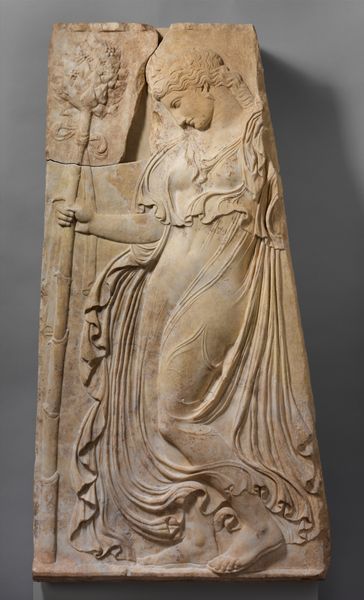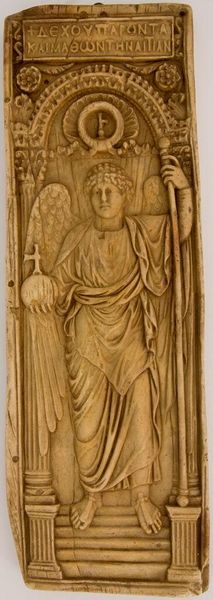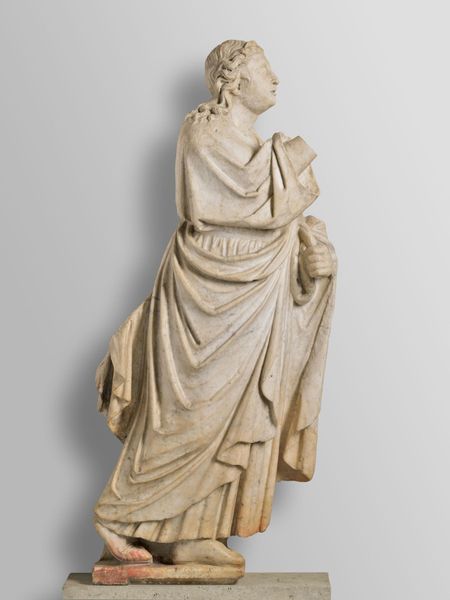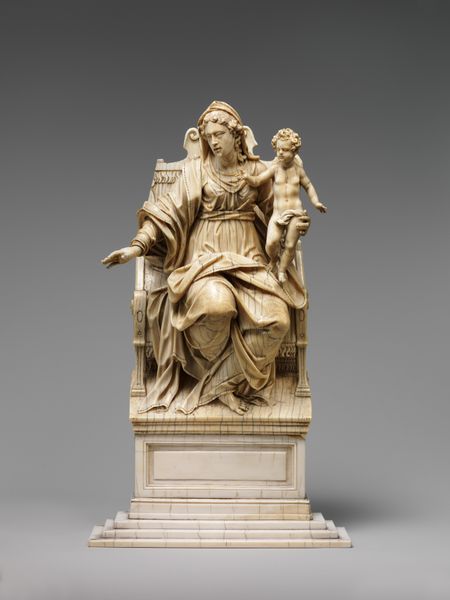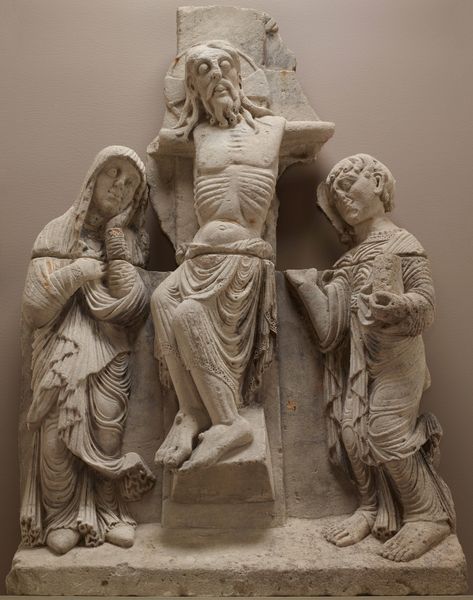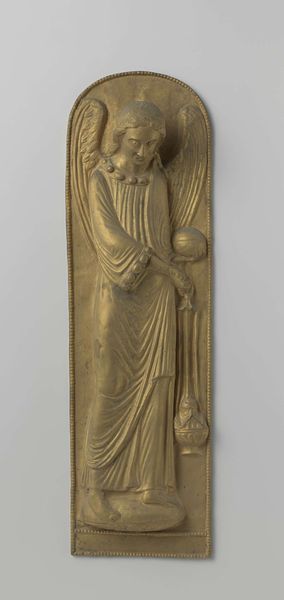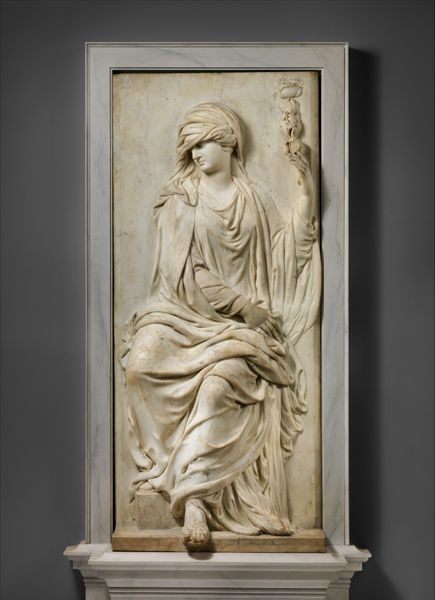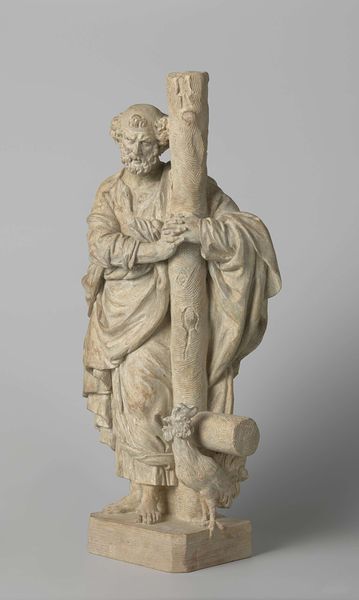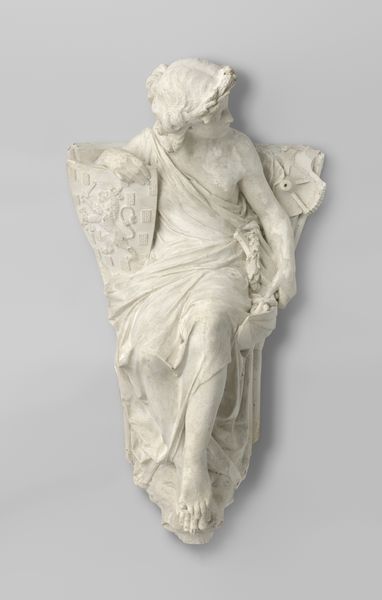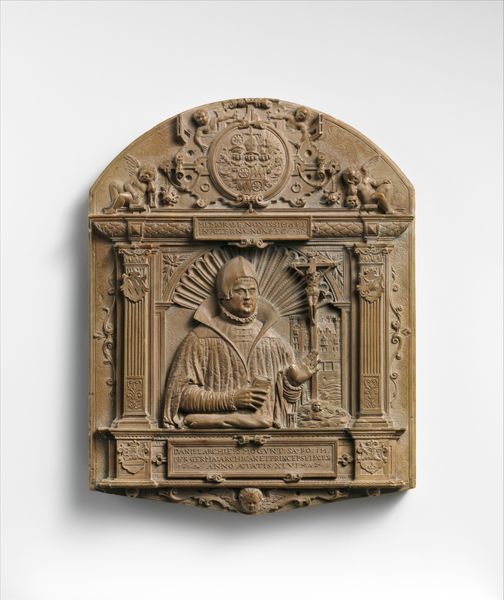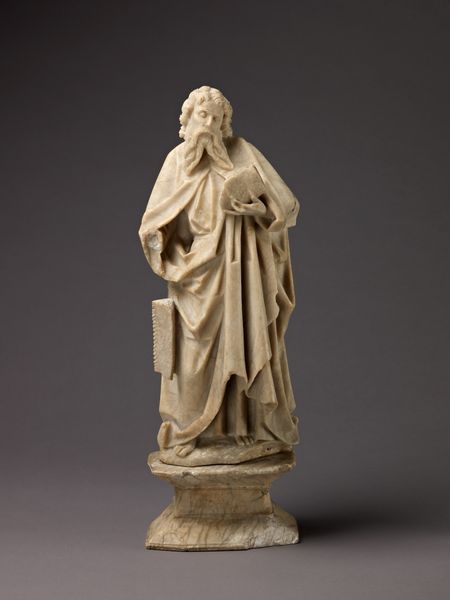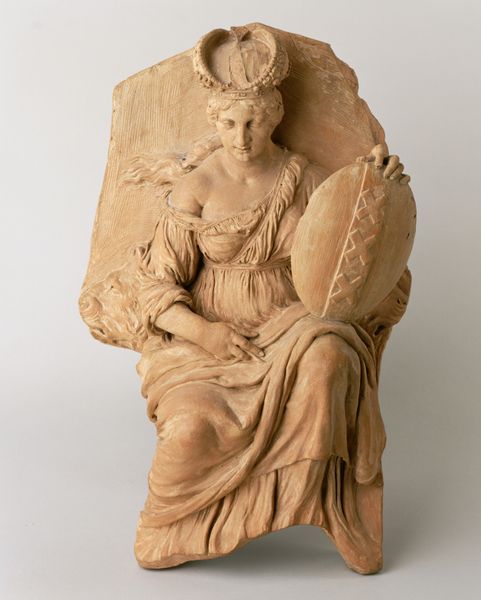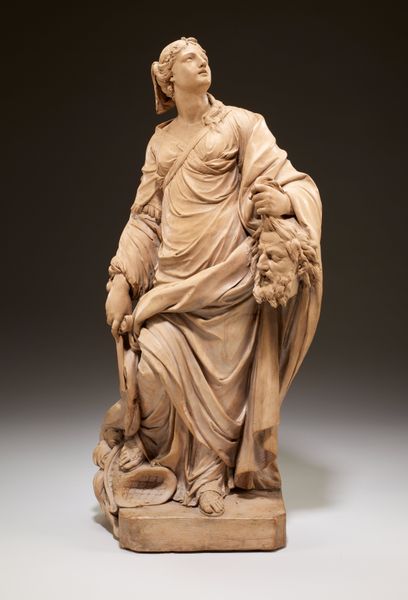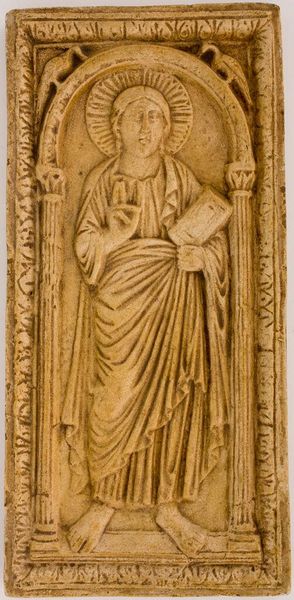
carving, relief, sculpture, marble
#
portrait
#
medieval
#
carving
#
stone
#
sculpture
#
relief
#
figuration
#
historic architecture
#
sculpture
#
men
#
decorative-art
#
marble
#
italian-renaissance
#
statue
Dimensions: Overall, assembled (confirmed): H. 47 1/8 x W. 31 3/4 x D. 6 3/4 in., 439lb. (119.7 x 80.6 x 17.1 cm, 199.1291kg); Weight, central panel: 271lb. (122.9248kg); Weight, each pilaster: 84 lb. (38.1022kg)
Copyright: Public Domain
Curator: Before us stands "Saint Andrew," a marble relief sculpture created around 1491 by Andrea Bregno. Editor: The cool, pale stone gives it a subdued, almost ghostly presence. Note how the lines of the drapery create dynamic diagonals against the rigid architectural background. Curator: Absolutely. Bregno, active in the Quattrocento, skillfully incorporates classical architectural elements, such as the Corinthian columns and the arched niche. However, to truly grasp this piece, we must consider the social and religious contexts of Renaissance Italy. Andrew was one of Jesus’s apostles. Depicting him prominently signals the importance of faith within the societal structure of that era. Editor: I'd also highlight how the light catches the curves of the saint's garments, creating depth. The delicate carvings emphasize volume and solidity within a very shallow space. Semiotically speaking, observe the inclusion of his attribute, the saltire. Curator: The inclusion of the saltire underscores his martyrdom, deeply influencing religious devotion and pilgrimage routes connected to Saint Andrew across Europe and beyond. How was he received in different locations as well? To consider how the piece affected people and their identities over the centuries, its various significations.... Editor: While those interpretations are essential, consider the way Bregno manipulates texture and form. He generates dramatic tension through the sharp contrast between smooth and coarse marble surfaces. Curator: Yes, and this tension perhaps reflects the inner struggles of faith and doubt that many people confronted in an era defined by great societal and religious transformation. Thank you for reminding us that an artwork’s essence isn’t just within itself; but in the broader circumstances of production, display, and viewing too. Editor: A perfect example of how close analysis of form provides so much to consider for us to take away.
Comments
No comments
Be the first to comment and join the conversation on the ultimate creative platform.
